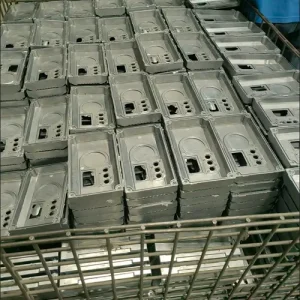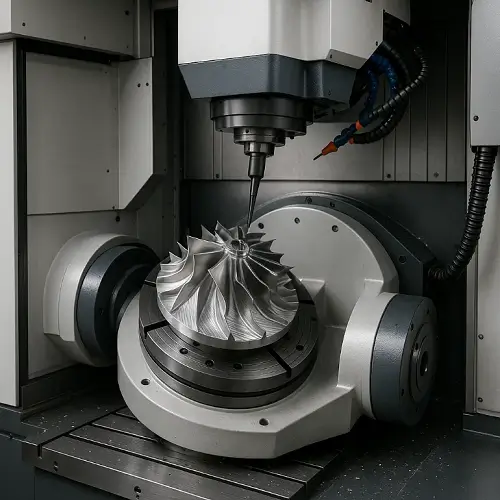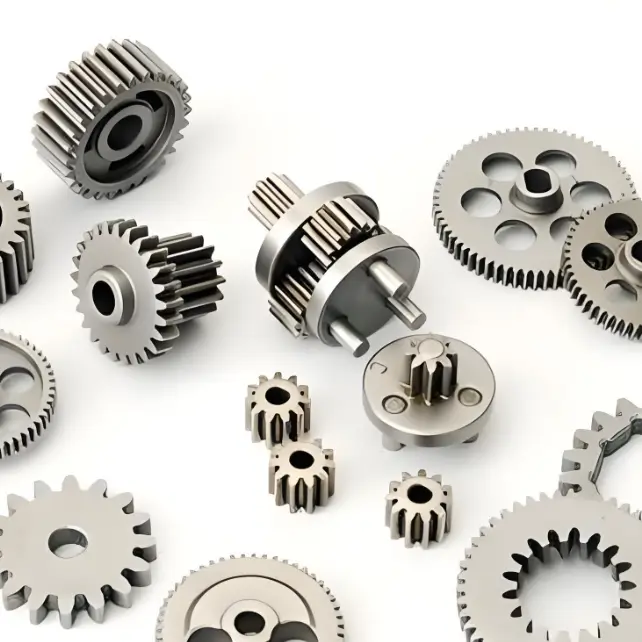In this article about die casting, it’s worth noting that die casting typically involves high initial production costs. As a result, this process is most often used for mass production. Only large-scale production can offset the cost of die casting. Of course, small-batch production is also possible—but only if you provide us with the design drawings. We will do our utmost to produce your parts with precision and care.

What is Die Casting?
Die casting is a metal rapid forming technology, similar to metal injection molding, and is a type of casting process.
The process involves injecting molten metal (such as aluminum or zinc) into a steel mold under high pressure (tens to hundreds of tons). After cooling, the mold is opened to remove the finished part.
Advantages of die casting:
-
Fast production: A part can be made in seconds to dozens of seconds.
-
High precision: Parts have accurate dimensions and smooth surfaces (like smartphone housings or automotive components).
-
Ideal for mass production: Capable of producing thousands of identical parts per day.
Disadvantages of die casting:
-
Expensive molds (not cost-effective for small batches).
-
Not suitable for very large parts (typically less than 1 meter in size).
-
Not all metals are suitable (e.g., steel has too high a melting point for die casting).
A simple analogy:
Have you ever played with Play-Doh molds as a kid? You press the dough into a mold, and it instantly takes shape. Die casting is similar—except it uses molten metal and high pressure, and the molds are made of steel, capable of being reused hundreds of thousands of times.
What Materials Are Used in Die Casting?
Die casting primarily uses low-melting-point metals. Common options include:
| Material | Features | Typical Applications |
|---|---|---|
| Aluminum | Lightweight, affordable, corrosion-resistant | Automotive parts (engine housings, wheels), phone frames |
| Zinc | Easy to mold, smooth surface | Door locks, zipper pulls, toy gears |
| Magnesium | Ultra-light (even lighter than aluminum) | Laptop housings, camera bodies |
| Copper | High strength, excellent conductivity | Plumbing fittings, electrical components |
How to choose the material:
-
For lightweight parts: use aluminum or magnesium (e.g., phones, cars).
-
For cost-effective parts: use zinc (e.g., small hardware).
-
For high strength: use copper (more expensive, less common).
Die Casting Mold Production Process:
Mold preparation (steel, expensive!)
Preheat the mold (to prevent rapid metal cooling)
Spray release agent (like a “non-stick coating” to ease part removal
Melting metal & injection:
Heat metal until it becomes molten (e.g., aluminum at ~700°C)
Inject molten metal into the mold using high pressure (tens to thousands of tons)
Cooling & part removal:
Cool for a few seconds to solidify
Open the mold and remove the part
Trim off flash and inspect quality
Advanced Die Casting Techniques:
-
Vacuum Die Casting: Removes air from the mold to reduce bubbles and improve quality.
-
Semi-solid Die Casting: Metal is partially solid during injection, allowing for greater precision (but more expensive).
Applications of Die Casting:
-
Automotive: Engine components, transmission housings, EV battery enclosures (e.g., Tesla uses large die-casting machines for one-piece rear frames)
-
3C Electronics: Phone/laptop housings, heat sinks
-
Home Appliances: Rice cooker liners, AC brackets
-
Daily Goods: Door handles, keychains, toy cars
Finishing Processes for Die Cast Parts:
-
Deburring: Vibration, sandblasting, cryogenic, or laser methods
-
Polishing: Mechanical, electrolytic, chemical, or sandblasting
-
Machining: CNC drilling, milling
-
Surface Treatments: Electroplating, anodizing, painting
Which process to choose depends on part usage, material, and budget. For high-precision parts (like automotive or electronics), multiple processes may be combined. For standard hardware, simple deburring and plating might be enough.
Future Trends in Die Casting:
-
Larger parts: e.g., casting an entire car rear floor in one piece
-
More eco-friendly: Using recycled aluminum/magnesium alloys to reduce pollution
-
More intelligent: Using AI to optimize processes and reduce defects
Die casting is essentially “metal injection molding”, perfect for making precision, high-volume metal parts—like components in cars and smartphones. The core formula: metal + mold + high pressure = rapid forming!
We offer a complete die casting solution. Whether you need mass production or small batches, choose Jeek for an advanced and reliable process. Contact us today for a quote.


